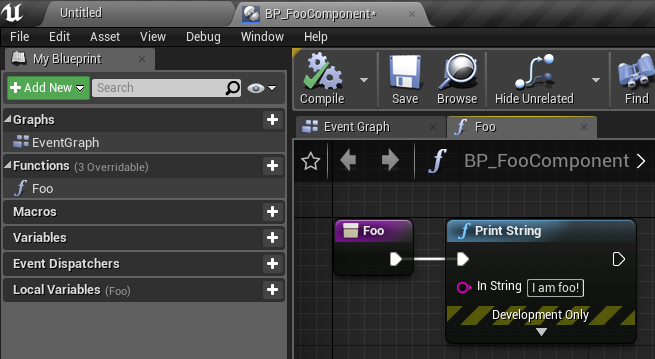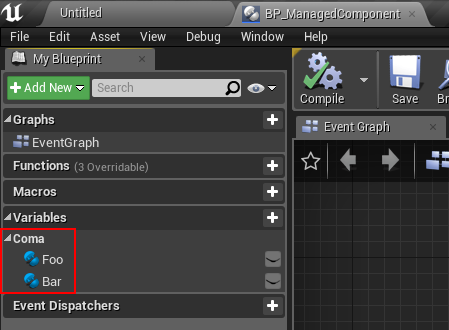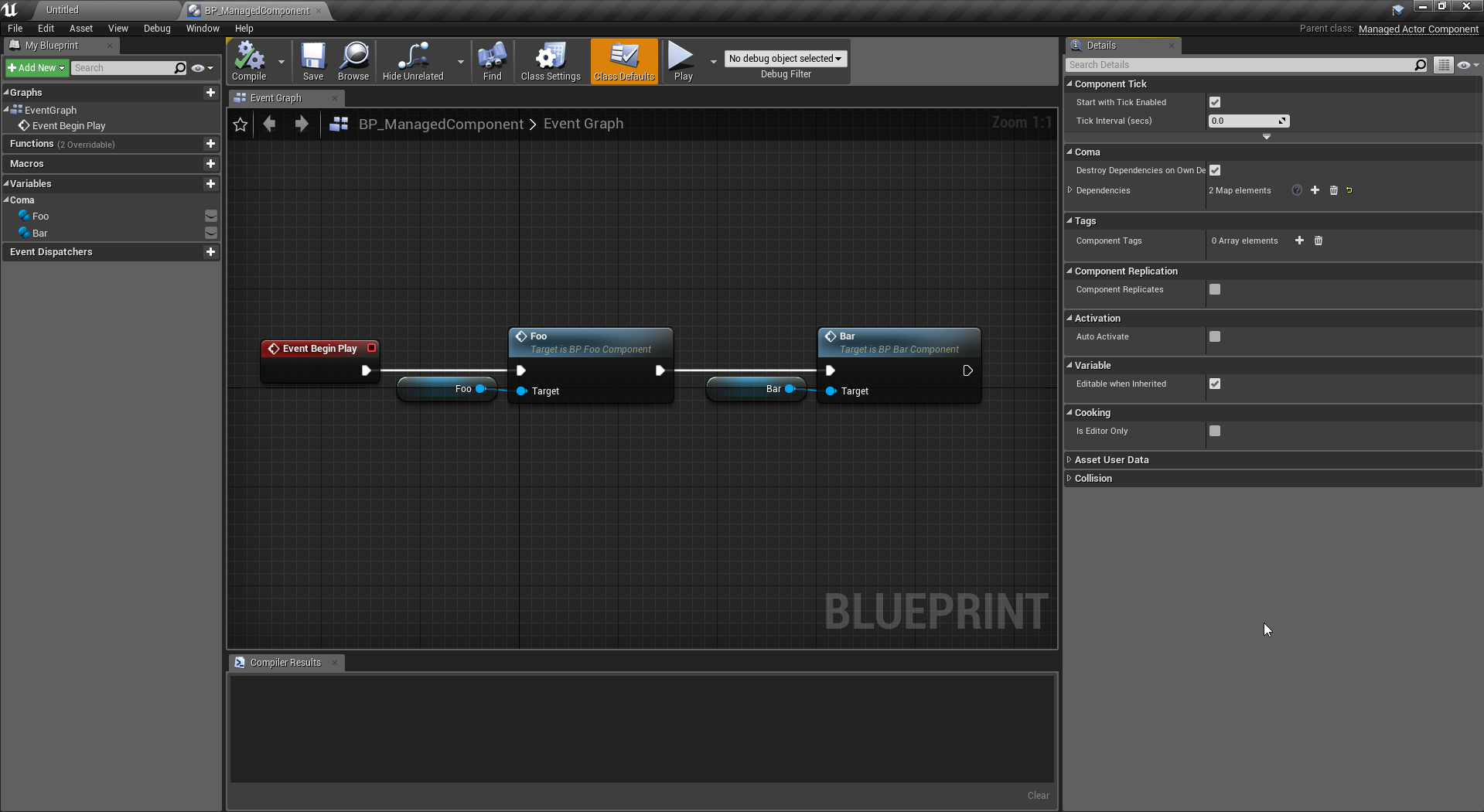# Component Dependencies
Dependencies are the one aspect that you only need to worry about once when you decide what you need, everything else is handled by Coma.
# What Are Component Dependencies?
Component dependencies are the components your Managed Component needs to fullfill its responsibilities.
Let's take a look on how to define them inside your previously created Managed Component.
# How To Add Component Dependencies?
# Our Test Component Dependencies
To add dependencies we of course need components that will serve as our dependencies.
To keep it simple just create two components:
BP_FooComponentBP_BarComponent
You might have guessed what they will do, for now they will both have a public function that will print to the screen.
You can probably guess what the
BP_BarComponentlooks like.

# Adding Test Component Dependencies
Now that we got our test dependencies we can add them to the Managed Component.
Let's open up the previously created Managed Component and take a look at the Details Panel.

Under the Coma section you can see two properties that the Managed Component comes with.

Let's take a look at them in more detail:
# Destroy Dependencies on Own Destruction
This is a simple boolean flag which indicates whether the Managed Component will destroy its dependencies when itself is removed/destroyed.
# Dependencies
This property is the heart of the Managed Component here you can add and name all your components the managed component depends on.
Let's add our test dependencies.
First we create a new entry on the Dependencies map property.~

We name the dependency Foo and select the BP_FooComponent.

And do the same for the BP_BarComponent.

# Dependency Variables
Now, here is where the magic starts.
When you now compile the Blueprint Coma will automatically create and inject variables of the correct type.

# Working With Dependencies
Now you can safely work with the created dependency variables and use them in your Managed Component.

You might be wondering from where these variables will receive their value.
We will look at that in the next section, for now you can use the variables as valuesless placeholders for a future dependency component reference.
